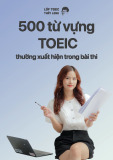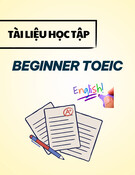
1

2

Listening sources
ho / What do pupils listen to in class?
eacher talk
ecordings
riends
3

Teacher talk
hy should teachers use English in class?
to provide language input
to get pupils used to intonation patterns and sounds
ow can pupils understand teacher’s English?
by context
by gestures
by visual aids 4

Listening sub-skills
ottom-up processing
nderstand parts make sense of the whole
5




![Tài liệu luyện thi TOEIC cấp tốc trong 10 ngày [chuẩn nhất]](https://cdn.tailieu.vn/images/document/thumbnail/2025/20251029/kimphuong1001/135x160/99661761725822.jpg)
![Tài liệu Phá đảo TOEIC 900+ từ mất gốc trong 30 ngày [Mới nhất]](https://cdn.tailieu.vn/images/document/thumbnail/2025/20251029/kimphuong1001/135x160/2101761720956.jpg)











